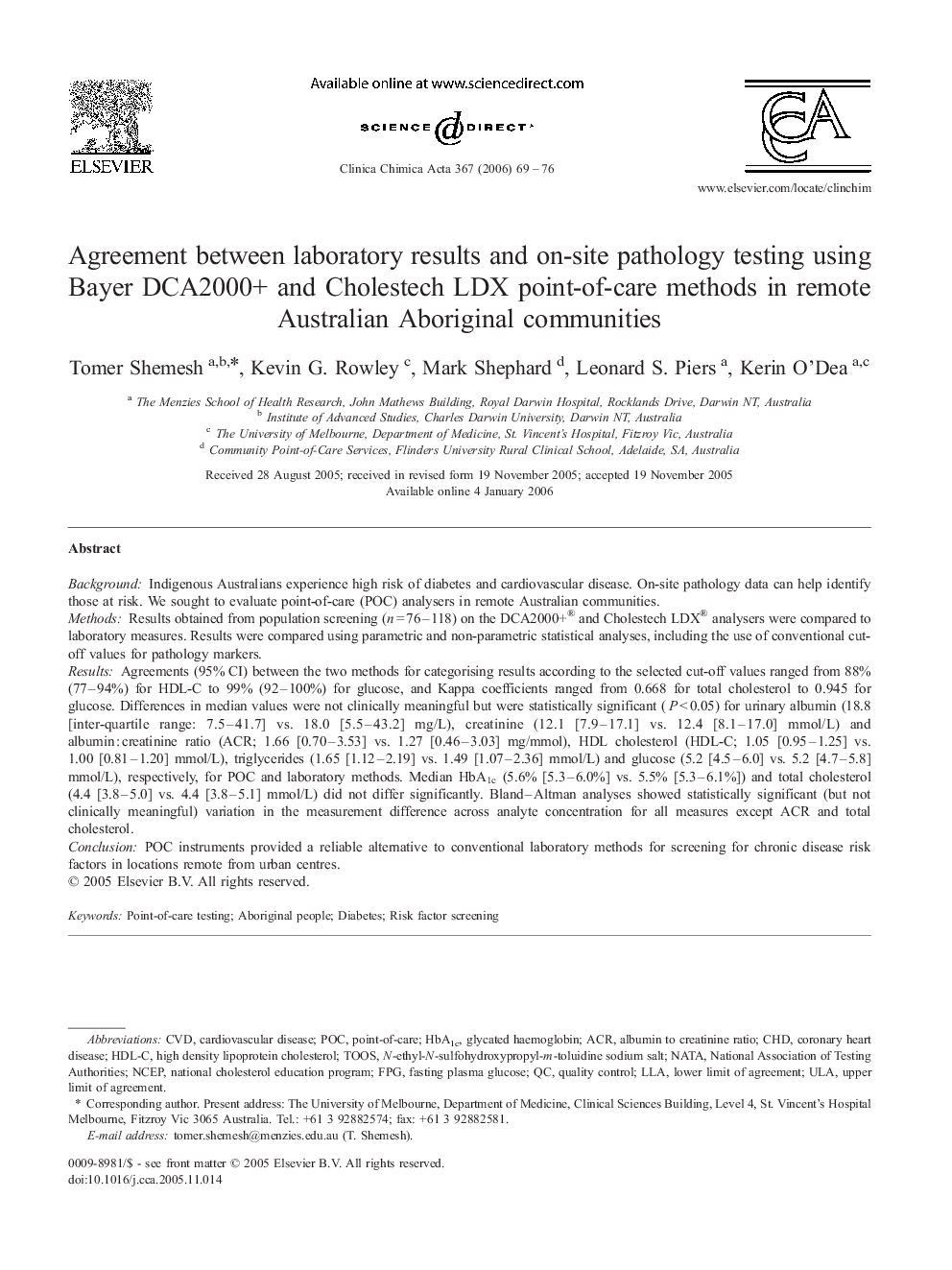| کد مقاله | کد نشریه | سال انتشار | مقاله انگلیسی | نسخه تمام متن |
|---|---|---|---|---|
| 1968081 | 1538760 | 2006 | 8 صفحه PDF | دانلود رایگان |

BackgroundIndigenous Australians experience high risk of diabetes and cardiovascular disease. On-site pathology data can help identify those at risk. We sought to evaluate point-of-care (POC) analysers in remote Australian communities.MethodsResults obtained from population screening (n = 76–118) on the DCA2000+® and Cholestech LDX® analysers were compared to laboratory measures. Results were compared using parametric and non-parametric statistical analyses, including the use of conventional cut-off values for pathology markers.ResultsAgreements (95% CI) between the two methods for categorising results according to the selected cut-off values ranged from 88% (77–94%) for HDL-C to 99% (92–100%) for glucose, and Kappa coefficients ranged from 0.668 for total cholesterol to 0.945 for glucose. Differences in median values were not clinically meaningful but were statistically significant (P < 0.05) for urinary albumin (18.8 [inter-quartile range: 7.5–41.7] vs. 18.0 [5.5–43.2] mg/L), creatinine (12.1 [7.9–17.1] vs. 12.4 [8.1–17.0] mmol/L) and albumin : creatinine ratio (ACR; 1.66 [0.70–3.53] vs. 1.27 [0.46–3.03] mg/mmol), HDL cholesterol (HDL-C; 1.05 [0.95–1.25] vs. 1.00 [0.81–1.20] mmol/L), triglycerides (1.65 [1.12–2.19] vs. 1.49 [1.07–2.36] mmol/L) and glucose (5.2 [4.5–6.0] vs. 5.2 [4.7–5.8] mmol/L), respectively, for POC and laboratory methods. Median HbA1c (5.6% [5.3–6.0%] vs. 5.5% [5.3–6.1%]) and total cholesterol (4.4 [3.8–5.0] vs. 4.4 [3.8–5.1] mmol/L) did not differ significantly. Bland–Altman analyses showed statistically significant (but not clinically meaningful) variation in the measurement difference across analyte concentration for all measures except ACR and total cholesterol.ConclusionPOC instruments provided a reliable alternative to conventional laboratory methods for screening for chronic disease risk factors in locations remote from urban centres.
Journal: Clinica Chimica Acta - Volume 367, Issues 1–2, May 2006, Pages 69–76